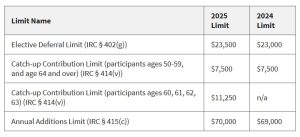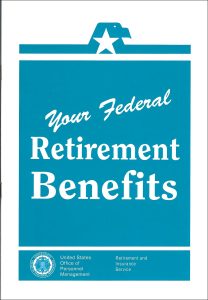Posted on Wednesday, 26th February 2025 by Dennis Damp
 Print This Post
Print This Post
The Social Security Fairness Act repealed the windfall elimination provision and the government pension offset last November, and impacted CSRS retirees are waiting for their Social Security checks to increase.
You are eligible for Social Security benefits if you accrued 40 quarters (10 years) of employment where Social Security payments were withheld. The Windfall Elimination Provision reduced the CSRS Social Security benefits if you had less than 30 years of “substantial” coverage and are collecting a CSRS federal retirement benefit.
Payments to Start
The Social Security Administration (SSA) will Start paying retroactive benefits the week of February 24, 2025. This will increase monthly benefit payments to people whose benefits have been affected by the WEP and GPO.
When a beneficiary is due retroactive benefits, they will receive a one-time retroactive payment, deposited into the bank account SSA has on file, by the end of March. This retroactive payment will cover the increase in their benefit amount back to January 2024, when WEP and GPO no longer apply.
Social Security benefits are paid one month behind. Most affected beneficiaries will begin receiving their new monthly benefit amount in April 2025 (for their March 2025 benefit).
What to Expect
Anyone whose monthly benefit is adjusted or who will get a retroactive payment will receive a mailed notice from Social Security explaining the benefit change or retroactive payment.
Beneficiaries may receive two mailed notices: the first when WEP or GPO is removed from their record and the second when their monthly benefit amount is adjusted for their new monthly payment amount. You may receive a retroactive payment before receiving the notice.
In certain complex cases that can’t be processed automatically, SSA must spend additional time manually updating the records and paying both retroactive benefits and the new benefit amount.
Social Security advised those eligible for a refund and increased benefits to wait until April to inquire about the status of their retroactive payment since these payments will be processed incrementally throughout March.
Refunds will vary depending on factors such as the type of Social Security benefit received and the amount of the person’s pension. According to Social Security, “Some people’s benefits will increase very little while others may be eligible for over $1,000 more each month.”
Summary
WEP did not significantly reduce my Social Security benefits because I had 27 years of substantial earnings, primarily through my business. I should receive a letter soon outlining what to expect. The Act applies to benefits you get on your own record (retirement or disability benefits) and to your spouse’s or surviving spouse’s benefits on another person’s record.
SSA published a comprehensive update that addresses most situations; visit their update page for complete information.
Helpful Retirement Planning Tools

Federal employees who are retiring soon and recent retirees with security clearances
can search thousands of high-paying defense and government contractor jobs.
- Retirement Planning Guide for Federal Employees & Annuitants
- The Ultimate Retirement Planning Guide – Start Now
- Complimentary Retirement Planning Session
- Deciding When To Retire – A 7-Step Guide
- How to Avoid Retirement Processing Delays (UPDATE)
- Hiring a Financial Planner
- TSP Guide
- Budget Work Sheet
- 2025 Federal Employees Leave Record
- Medicare Guide
- Social Security Guide
Disclaimer: The information provided may not cover all aspect of unique or special circumstances, federal regulations, medical procedures, investment, and benefit information are subject to change. To ensure the accuracy of this information, contact relevant parties for assistance including OPM’s retirement center.
Over time, various dynamic economic factors relied upon as a basis for this article may change. The information contained herein should not be considered investment advice and may not be suitable for your situation. This service is not affiliated with OPM or any federal entity. You should consult with a financial, medical or human resource professional where appropriate. Neither the publisher or author shall be liable for any loss or any other commercial damages, including but not limited to special, incidental, consequential, or other damages.
Posted in ANNUITIES / ELIGIBILITY, BENEFITS / INSURANCE, ESTATE PLANNING, FINANCE / TIP, RETIREMENT CONCERNS, SOCIAL SECURITY / MEDICARE, SURVIVOR INFORMATION
Comments (0)|  Print This Post
Print This Post







